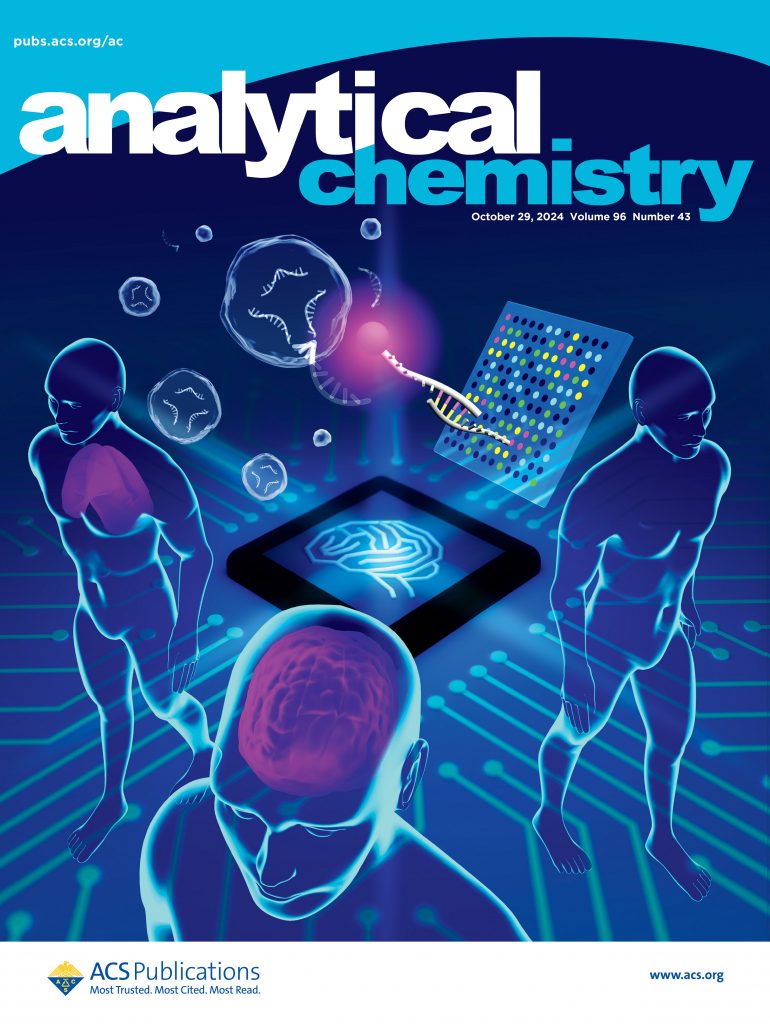2024.10.30
A paper has been published by Analytical Chemistry
This is a research paper on detecting multiple cancers using urinary exosome microRNAs. The paper was selected for the supplementary journal cover.
Paper summary
In healthy individuals and cancer patients, certain microRNAs contained in extracellular vesicles, such as exosomes, differ, suggesting their potential use as “cancer markers.” Exosomes are tiny particles (about 40–200 nm in diameter) released by all cells, functioning in the body as carriers of information for intercellular communication. Considering the diffusion time of exosomes in the bloodstream and the duration of blood circulation itself, it is unlikely that all exosomes in the blood participate in intercellular communication in a single circulation. Those exosomes not involved in communication are likely non-selectively filtered by the kidneys. In this study, we hypothesized that “not all exosomes in the bloodstream are used in cell communication, with some being excreted in urine,” and we conducted an analysis of urinary exosome microRNAs. We used zinc oxide nanowires to efficiently collect exosomes from the urine of both cancer patients and healthy individuals, followed by extraction of microRNAs from these exosomes. By performing machine learning analysis on the microRNA profiles from urinary exosomes, we identified distinct “microRNA ensembles” that could serve as cancer markers, distinguishing cancer patients from non-cancer patients (sensitivity: 98.2%, specificity: 96.5%). Additionally, we were able to identify early-stage cancer patients (Stage I) with an AUROC of 0.987.
Article information
Early cancer detection via multi-microRNA profiling of urinary exosomes captured by nanowires
T. Yasui*, A. Natsume*, T. Yanagida*, K. Nagashima, T. Washio, Y. Ichikawa, K. Chattrairat, T. Naganawa, M. Iida, Y. Kitano, K. Aoki, M. Mizunuma, T. Shimada, K. Takayama, T. Ochiya, T. Kawai and Y. Baba*
Analytical Chemistry, 96, 17145 (2024), 10.1021/acs.analchem.4c02488
About the Analytical Chemistry
Analytical Chemistry is the official journal of the American Chemical Society and the most-cited journal in the field of analytical chemistry. This peer-reviewed research journal is dedicated to disseminating new discoveries and innovative insights in analytical chemistry, covering a broad spectrum from theoretical studies to experimental research reports. Articles published in this journal typically introduce new or improved chemical measurement techniques or discuss the principles and performance of existing methods from a unique perspective. Even for existing analytical methods, significant improvements or unique applications are generally expected. The subfields covered by Analytical Chemistry include analytical operations such as sampling and data analysis, bioanalytical chemistry, bioengineering, chemical analysis, environmental science, forensic science, materials science, and medicine, all aiming to advance the understanding of chemical measurements.

